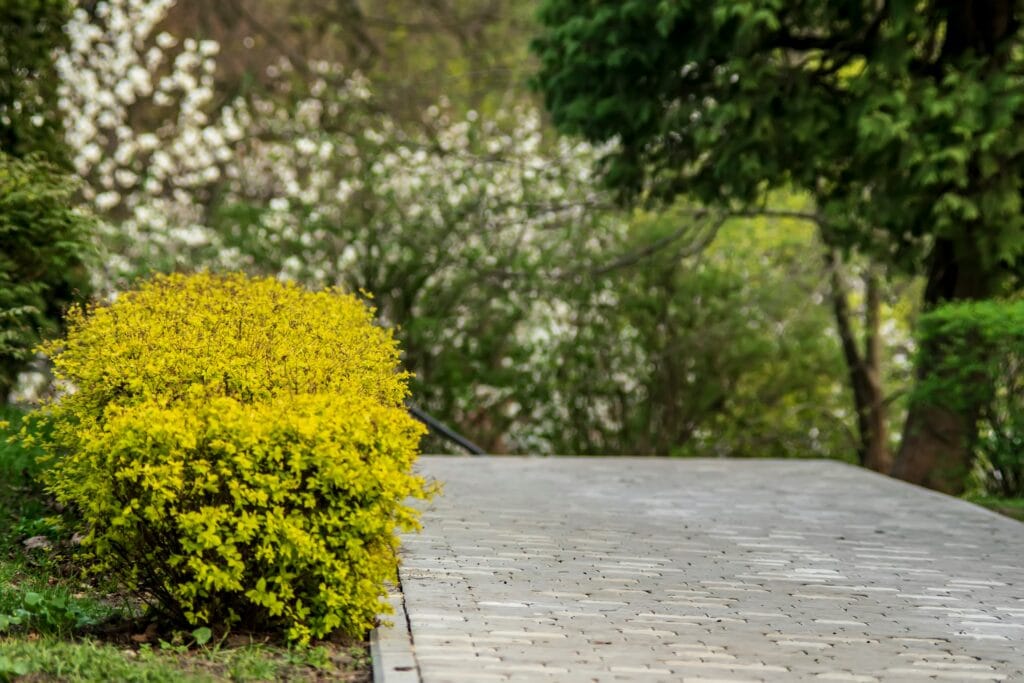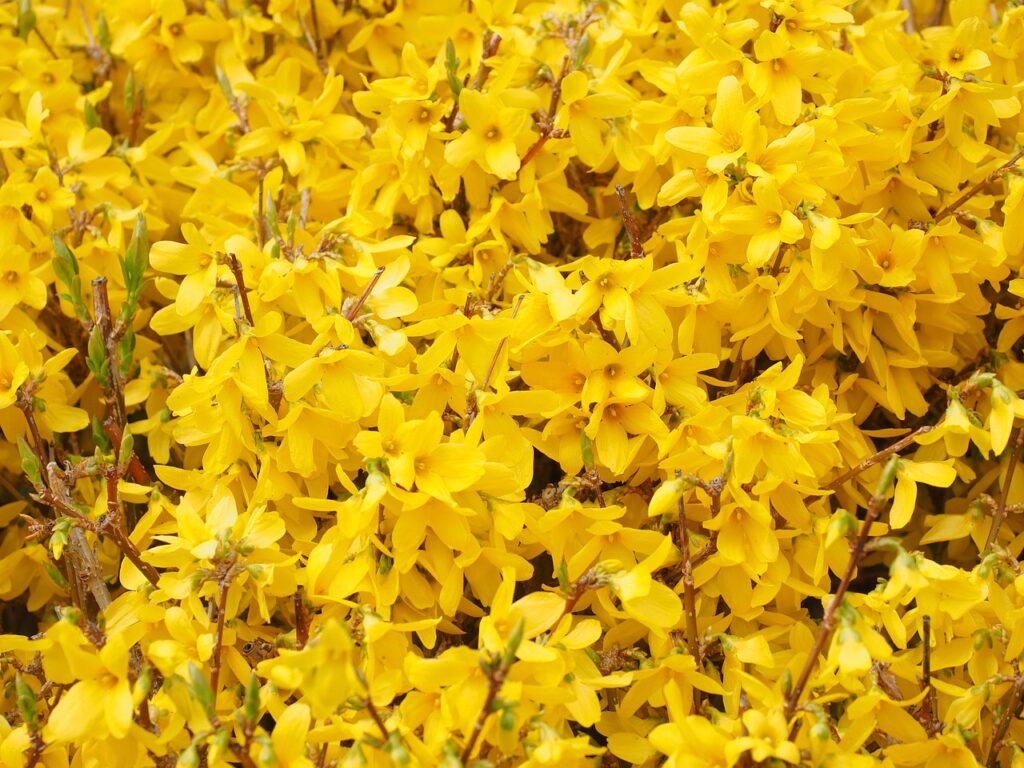
Introduction to Forsythia
Forsythia shrubs are a vibrant sign of spring, bringing bright yellow flowers to gardens just as the cold winter days start to fade. Known for their golden blooms and hardy nature, forsythias are a popular choice for adding a splash of early color to landscapes. In this guide, we’ll explore everything you need to know about growing and caring for forsythia, from selecting the right variety to mastering pruning techniques.
What Makes Forsythia Special?
Forsythias stand out for their bold yellow flowers that burst into bloom before the leaves even appear, providing a radiant display in early spring. Not only are they beautiful, but they’re also low-maintenance and adaptable to various garden conditions, making them a favorite among beginner and seasoned gardeners alike.
Forsythia Varieties
Forsythias come in several varieties, each with unique characteristics. Here’s a quick look at some popular types:
- Forsythia x intermedia: This hybrid is one of the most common types, known for its resilience and abundant flowering.
- Forsythia suspensa: Often referred to as weeping forsythia, this variety has cascading branches and a graceful appearance.
- Forsythia viridissima: This type offers a slightly more compact growth and a deeper shade of yellow.
When to Prune Forsythia
Pruning forsythia at the right time is essential for maintaining its shape and encouraging dense, vibrant blooms. Typically, the best time to prune is right after the flowering period, which allows the plant to prepare for next year’s growth without disrupting its natural cycle.
Forsythia Growth Stages
Understanding the growth stages of forsythia can help you anticipate its needs throughout the year:
- From Bud to Bloom: Forsythia buds form in late winter, and the flowers emerge as temperatures start to rise.
- Leaf Development: After flowering, leaves begin to develop, turning the shrub a lush green.
- Seasonal Color Changes: In fall, some varieties of forsythia take on a bronze or purple hue before losing their leaves.
How to Plant Forsythia
Site Selection and Preparation
Forsythias prefer well-drained soil and a location that receives full to partial sunlight. They can tolerate various soil types, but thrive best in loamy, fertile soil.
Planting Tips
- Spacing: Plant forsythias about 3-4 feet apart to give them room to grow.
- Depth: Dig a hole twice as wide and as deep as the root ball to allow roots to spread easily.
- Watering: Water thoroughly after planting to help the shrub establish strong roots.
Caring for Forsythia

Forsythias are hardy shrubs but benefit from basic care:
- Watering: Provide regular watering, especially during dry spells. However, avoid overwatering, as forsythia dislikes soggy soil.
- Fertilizing: A balanced fertilizer in early spring supports growth and blooming.
- Disease and Pest Management: Forsythias are generally resistant to pests, but occasional fungal issues may arise. Proper spacing and good air circulation help prevent problems.
Pruning Techniques for Forsythia
Pruning helps maintain the shrub’s shape and encourages abundant flowering. Here’s a step-by-step guide:
- Best Time to Prune: Right after flowering.
- Tools Required: Pruning shears and loppers for thicker branches.
- Step-by-Step Guide:
- Start by removing any dead or damaged branches.
- Cut back older stems to the base to encourage new growth.
- Shape the shrub by trimming back branches that disrupt the overall appearance.
Forsythia in Landscaping
Forsythias can be used in various ways to enhance your garden:
- Border Plant: Plant along borders for a vibrant spring display.
- Hedge: Forsythias grow quickly, making them suitable for creating natural hedges with regular pruning.
Common Challenges in Growing Forsythia
Despite their hardiness, forsythias can encounter a few issues:
- Poor Bloom: Often due to improper pruning or insufficient sunlight.
- Yellow Leaves: May indicate overwatering or nutrient deficiency.
- Leggy Growth: Regular pruning can help keep the shrub dense and full.
Forsythia Myths and Facts
Many believe that forsythia shrubs are difficult to grow, but in reality, they’re quite forgiving and adaptable. They are also often thought to be invasive, which varies by region and can be managed with proper care.
Health Benefits of Forsythia
Forsythia has been used in traditional herbal medicine, particularly in Chinese practices, to treat infections and inflammation. While not commonly used in Western medicine, it is recognized for its potential benefits.
Is Forsythia Safe and Edible?
Forsythia is not considered edible for humans and is primarily an ornamental plant. Although it is generally safe to handle, it’s best not to ingest any part of the plant.
Future Trends for Forsythia in Gardening
As gardeners seek low maintenance and resilient plants, forsythia’s popularity is expected to grow. New varieties that are even more adaptable to urban settings and resistant to climate challenges are likely to emerge.
FAQ
- What is special about forsythia?
Forsythia’s bright yellow blooms make it one of the first shrubs to signal the arrival of spring. - Is forsythia invasive?
In some areas, forsythia can spread rapidly, but it is generally manageable with regular pruning. - What is the drug forsythia?
Forsythia is used in traditional Chinese medicine for its anti-inflammatory and antibacterial properties. - Is forsythia edible for humans?
No, forsythia is not edible and should be grown strictly as an ornamental plant. - What is the common name for forsythia?
Forsythia is commonly known as “golden bells” due to its golden yellow flowers.




